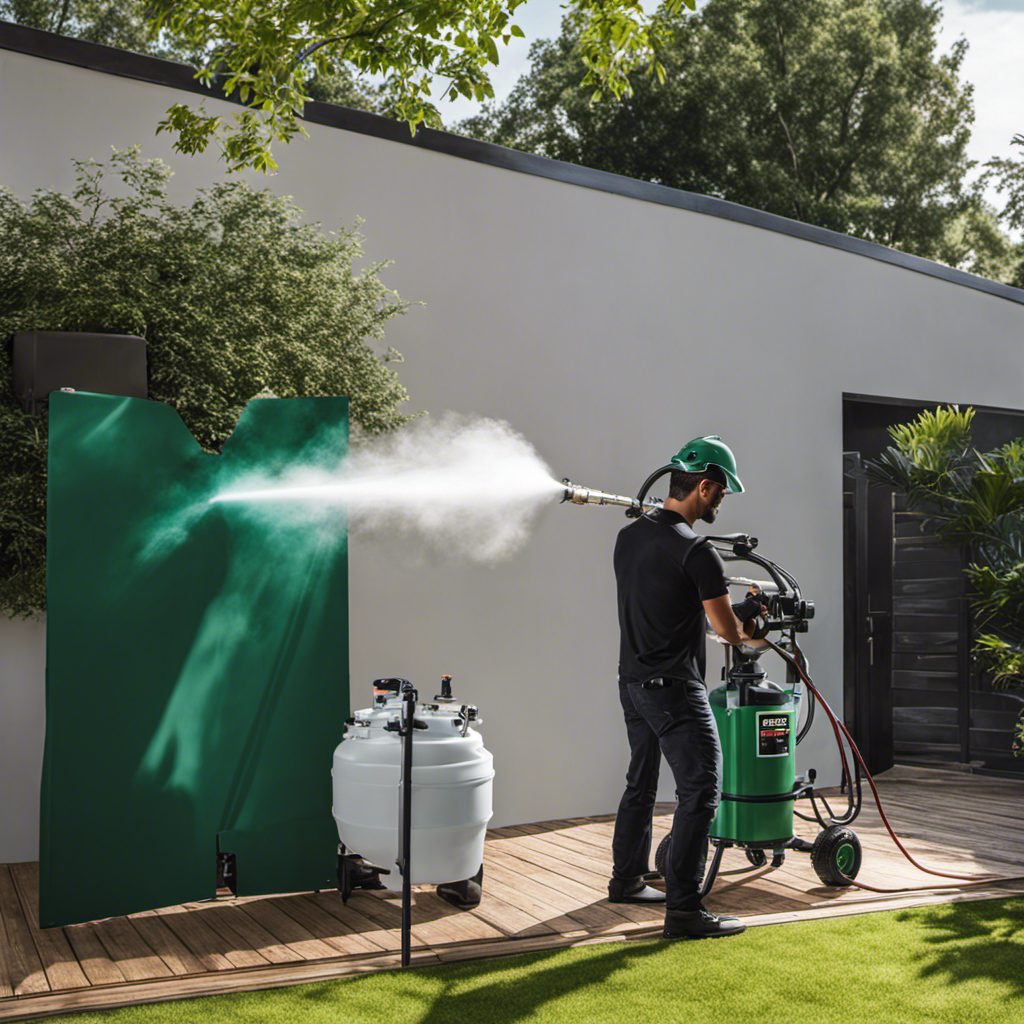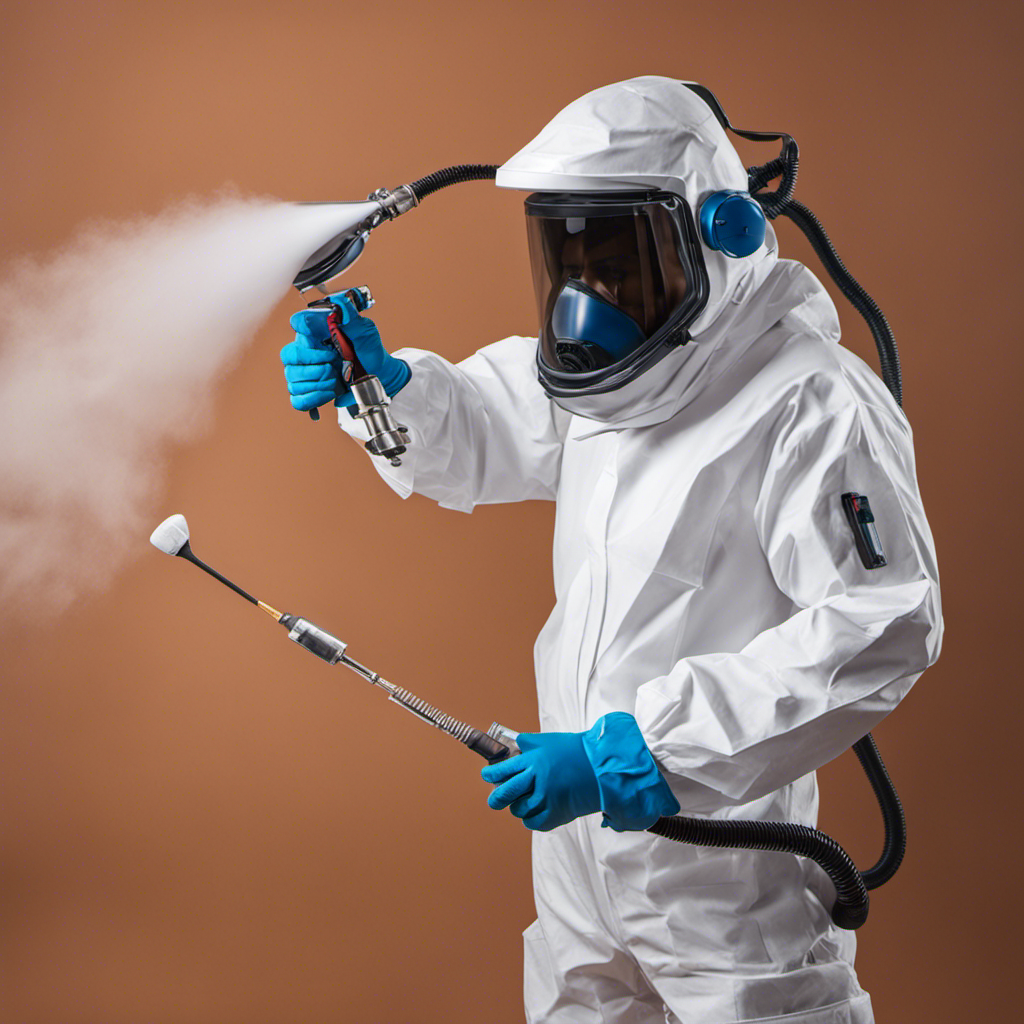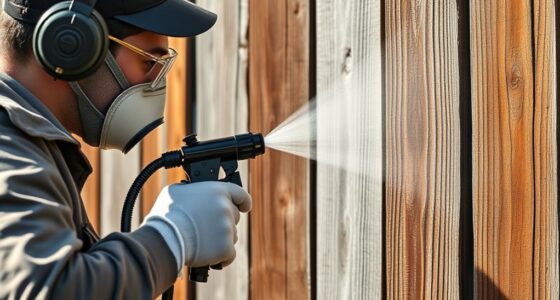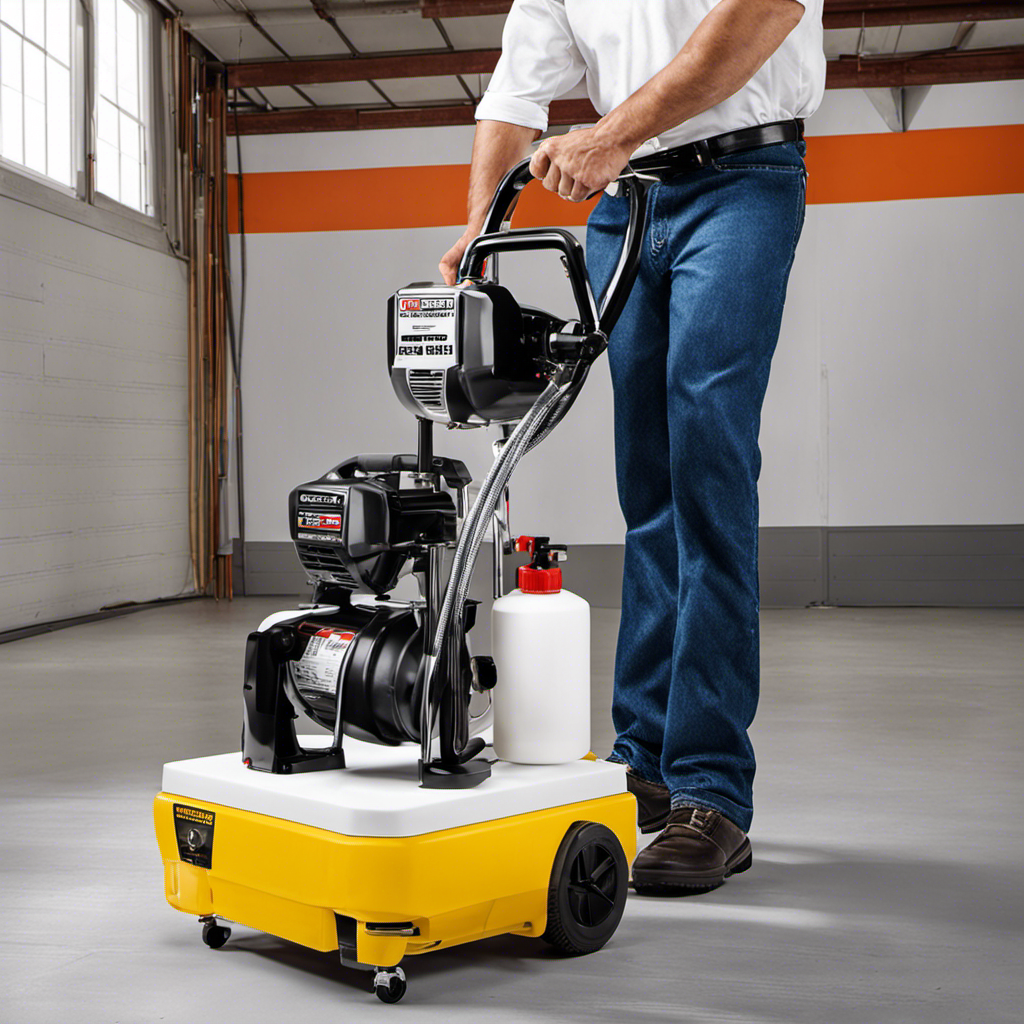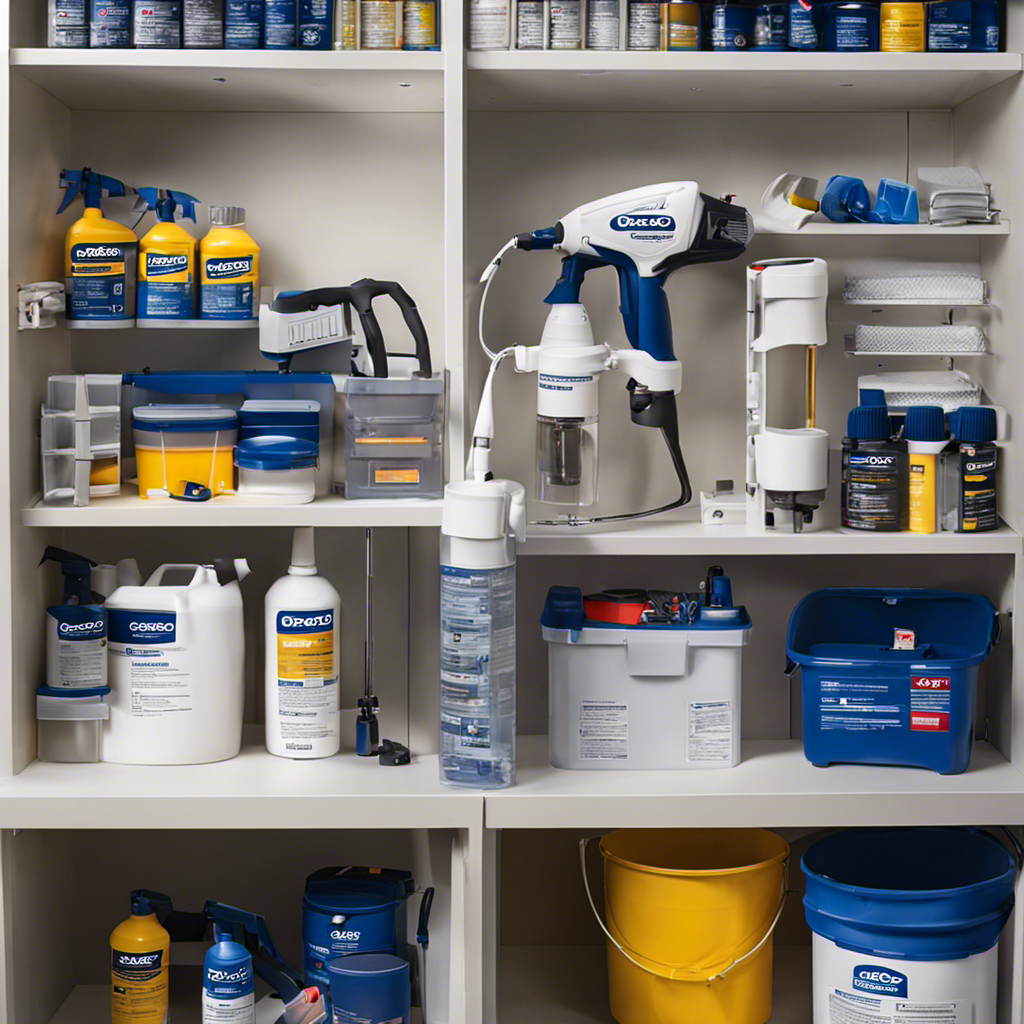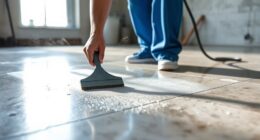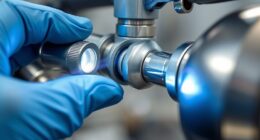In the realm of airless paint sprayers, pump protector solutions play a vital role in enhancing the performance and durability of the sprayers. These solutions offer a protective layer that aids in preventing corrosion, minimizing wear and tear, and prolonging the lifespan of the sprayer. They establish a safeguard against the harmful impact of corrosion, rust, and paint accumulation.
By using a pump protector solution, users not only protect their investment but also ensure optimal performance, saving time and money in the long run. With different types available, such as oil-based, water-based, and silicone-based options, users have a range of benefits to choose from, including lubrication, environmental friendliness, and superior protection against wear and tear.
Properly cleaning and preparing the pump before applying the solution is crucial, as it dissolves paint residue, lubricates components, and safeguards against rust and corrosion. Regular maintenance and reapplication of the pump protector solution are vital for keeping the equipment protected and functioning smoothly.
For those seeking alternative options, DIY solutions using natural ingredients can also help maintain optimal condition and performance.
Key Takeaways
- Pump protector solutions are essential for maintaining the longevity and efficiency of an airless paint sprayer.
- Regular application of pump protector solution helps prevent corrosion, reduces wear and tear, and extends the lifespan of the equipment.
- Pump protector solutions create a protective barrier against corrosion, rust, and paint build-up damage.
- Using a pump protector solution extends the lifespan of your sprayer and ensures optimal performance.
The Benefits of Pump Protector Solutions
Using a pump protector solution extends the lifespan of an airless paint sprayer by preventing corrosion, reducing wear and tear, and ensuring optimal performance.
The role of pump protector solutions in preventing equipment damage cannot be overstated. These solutions create a protective barrier against corrosion, rust, and paint build-up damage, which can lead to costly repairs and replacements.
By regularly applying a pump protector solution, you can significantly reduce the risk of damage and extend the lifespan of your sprayer. This not only protects your investment but also saves you time and money in the long run.
The long-term cost savings of using pump protector solutions are evident, as they help avoid expensive repairs and replacements while ensuring that your airless paint sprayer operates at its best for years to come.
Types of Pump Protector Solutions Available
Water-based pump protector solutions have several advantages over other types of pump protector solutions. Firstly, they are environmentally friendly and easy to clean. These solutions are non-toxic and do not harm the environment. They also do not release harmful fumes or chemicals, making them safe to use in various settings. Additionally, water-based solutions are easy to clean up. They can be rinsed off with water, eliminating the need for harsh solvents or chemicals. This saves time and effort during maintenance. Moreover, water-based solutions are generally more affordable compared to other types of pump protector solutions, making them a cost-effective option for those looking to protect their equipment without breaking the bank.
In comparison, oil-based pump protector solutions offer excellent lubrication but may be more expensive and require more thorough cleaning. On the other hand, silicone-based solutions provide superior protection against wear and tear and temperature variations but may be costlier. Ultimately, the choice between water-based, oil-based, or silicone-based pump protector solutions depends on the specific needs and preferences of the user.
Cleaning and Preparing the Pump
To ensure optimal performance and extend the lifespan of the equipment, it is crucial to clean and prepare the pump before applying the pump protector solution.
Proper pump maintenance is essential in preventing equipment damage and ensuring smooth operation. Before applying the pump protector solution, it is important to remove any paint residue or debris from the pump. This can be done by flushing the pump with clean water or using a suitable cleaning solution.
Cleaning the pump not only prevents clogs and blockages but also allows the pump protector solution to effectively lubricate the pump components. Additionally, cleaning the pump helps in preventing rust and corrosion, which can greatly extend the pump’s lifespan.
Applying and Reapplying the Pump Protector Solution
Applying and reapplying the pump protector solution regularly ensures that the equipment remains protected and operates smoothly. To ensure the best results, it is important to follow these best practices for applying the pump protector solution:
-
Follow the manufacturer’s instructions: Different pump protector solutions may have specific application methods and recommended frequencies of reapplication. It is crucial to read and follow the instructions provided by the manufacturer.
-
Apply after each use: After each painting session, it is recommended to apply the pump protector solution to the airless paint sprayer. This helps in preventing paint residue from drying and clogging the pump, ensuring its smooth operation.
-
Reapply periodically: In addition to applying the pump protector solution after each use, it is also advisable to reapply it periodically, especially if the sprayer is not used frequently. This helps maintain the protective barrier, preventing corrosion and extending the lifespan of the equipment.
Recommended Pump Protector Solutions
Silicone-based pump protector solutions offer superior protection against wear and tear and temperature variations, ensuring optimal performance and extending the lifespan of the equipment.
When choosing the right pump protector solution for your airless paint sprayer, it is important to consider the best pump protector brands available in the market. Look for brands that have a proven track record of providing reliable and effective protection for airless paint sprayers.
Additionally, consider the specific needs of your equipment. If you require heavy-duty applications, oil-based pump protector solutions may be the best choice as they provide superior lubrication. On the other hand, if you prioritize environmental friendliness and easy cleanup, water-based pump protector solutions are a good option.
Alternatively, you can explore DIY pump protector solutions using natural ingredients that can help maintain optimal condition and performance of your airless paint sprayer.
DIY Alternatives for Pump Protector Solutions
DIY alternatives using natural ingredients can effectively maintain the optimal condition and performance of an airless paint sprayer. Here are three advantages of homemade pump protector solutions and alternatives to water-based options:
-
Cost-effective: Homemade pump protector solutions are often made with ingredients readily available at home, such as vegetable oil or cooking spray. This makes them a more affordable option compared to commercial water-based pump protector solutions.
-
Eco-friendly: Homemade pump protector solutions made from natural ingredients are environmentally friendly and do not contain harmful chemicals. This makes them a safer choice for both the user and the environment.
-
Easy to make and use: DIY alternatives are simple to prepare and apply. For example, a homemade pump protector solution can be made by mixing equal parts of water and white vinegar. This solution can be easily poured into the airless paint sprayer’s inlet or connected to the suction tube.
Frequently Asked Questions
Are Pump Protector Solutions Safe to Use on All Types of Airless Paint Sprayers?
Pump protector solutions are generally safe to use on all types of airless paint sprayers. These solutions offer numerous benefits and are highly effective in maintaining the equipment’s longevity and performance. They create a protective barrier against corrosion, rust, and paint build-up damage.
Pump protector solutions also help prevent clogs and blockages, reducing the risk of downtime and costly repairs. It is important to follow the manufacturer’s instructions for optimal results and to ensure the safety and effectiveness of the solution.
How Often Should I Apply the Pump Protector Solution to My Airless Paint Sprayer?
Applying the pump protector solution regularly to an airless paint sprayer offers numerous benefits and ensures optimal performance. By doing so, users can prevent clogs, blockages, and corrosion, extending the sprayer’s lifespan.
Following best practices, such as using a suitable pump protector solution and adhering to the manufacturer’s instructions, is crucial. It is recommended to apply the solution after each use or at least once a month for heavy-duty applications.
This maintenance routine will protect your investment and keep your sprayer operating smoothly.
Can I Use a Pump Protector Solution as a Substitute for Regular Cleaning and Maintenance of My Airless Paint Sprayer?
Using pump protector solutions as a substitute for regular cleaning and maintenance of airless paint sprayers can have potential risks and benefits.
While these solutions provide a protective barrier against corrosion and rust, they may not fully remove paint residue or prevent clogs and blockages.
Regular cleaning and maintenance are still necessary to ensure optimal performance and longevity of the equipment.
It is recommended to follow the manufacturer’s instructions and use pump protector solutions as a supplement to, rather than a replacement for, regular cleaning and maintenance.
Do Pump Protector Solutions Have Any Negative Effects on the Paint or Finish of the Surfaces Being Sprayed?
Pump protector solutions are highly effective in preventing clogs and damage to airless paint sprayers. When selecting a pump protector solution for your sprayer, it is essential to consider factors such as lubrication, environmental friendliness, and protection against wear and tear.
These solutions do not have any negative effects on the paint or finish of the surfaces being sprayed. They create a protective barrier that prevents corrosion, rust, and paint build-up damage, ensuring optimal performance and longevity of the equipment.
Can I Mix Different Types of Pump Protector Solutions for Better Protection and Performance?
Mixing pump protector solutions can potentially affect the compatibility and performance of different paint sprayer brands. It is important to follow the manufacturer’s guidelines and recommendations when using pump protector solutions.
Some brands may have specific formulations that are designed to work best with their sprayers, while others may have compatibility issues when mixed. To ensure optimal protection and performance, it is generally recommended to use a single type of pump protector solution that is compatible with your specific paint sprayer brand.
Conclusion
In conclusion, it may seem ironic that something as simple as a pump protector solution can have such a significant impact on the performance and lifespan of airless paint sprayers.
However, the reality is that these solutions are essential for maintaining the efficiency and longevity of the equipment.
By creating a protective barrier against corrosion and wear and tear, pump protector solutions ensure optimal performance and protect your investment.
So, while it may seem counterintuitive, the small act of regularly applying a pump protector solution can ultimately save you time and money in the long run.
Franz came aboard the Paint Sprayer Zone team with a background in both journalism and home renovation. His articulate writing style, combined with a passion for DIY projects, makes him an invaluable asset. Franz has a knack for breaking down technical jargon into easy-to-understand content, ensuring that even the most novice of readers can grasp the complexities of paint sprayers.
